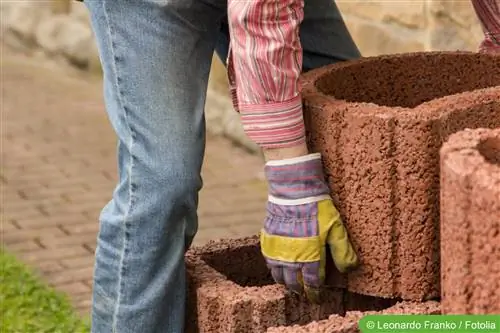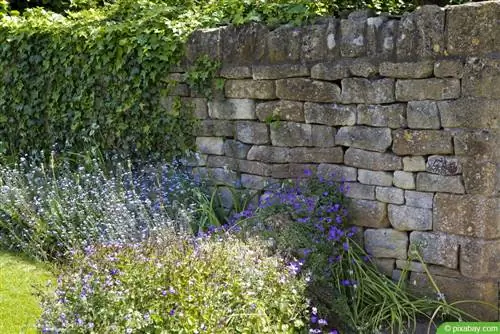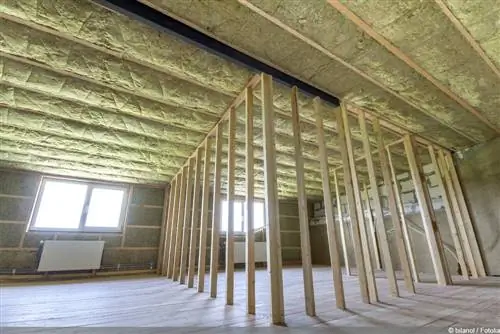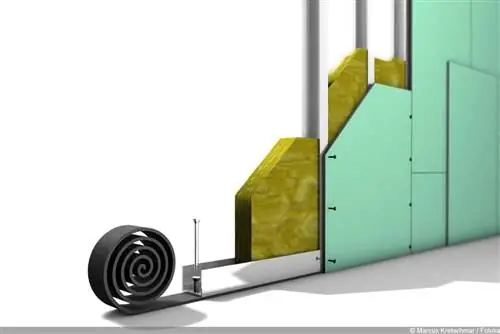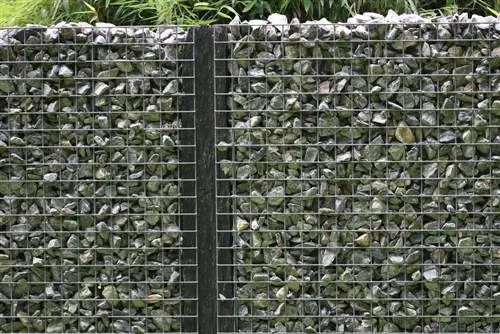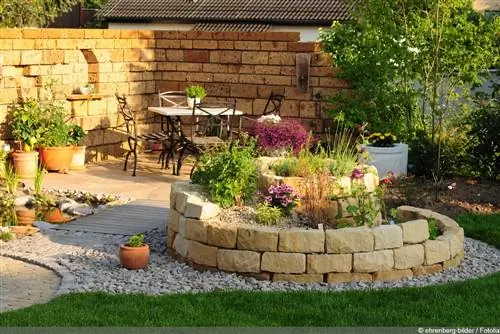- Author admin [email protected].
- Public 2023-12-17 03:39.
- Last modified 2025-01-24 12:45.
Planting stones can be used to fix low slopes and bridge height differences in the garden. But they can also be used simply for decoration, are easy to care for and practical and can be planted in a variety of ways.
In the rectangular version, they also serve as a boundary between the path and the bed or lawn. Plant stones can be made from various materials, but concrete is most often used for this purpose. They can be rectangular, but the round shapes are particularly popular, as they have a bulge on one side through which several plant stones can be pushed into one another, creating a visually beautiful picture. There are also many other variants of the shapes depending on the manufacturer.
Walls made of plant stones
A slope reinforcement made of planting stones needs a foundation that is able to bear the subsequent weight and serve as a support for the slope. For smaller walls that are not subject to such heavy loads, around 40 centimeters is sufficient; for high walls, the foundation should be correspondingly deeper. After the layer of earth on the slope has been removed, gravel or crushed stone is poured into the excavation, which is then covered with a layer of concrete at least ten centimeters thick. The lower planting stones are placed in this still wet concrete so that they find the necessary support. The following higher planting stones are then simply placed dry on the bottom row.
A conventional wall can also be spiced up with plant stones by placing a rectangular plant stone at a right angle to the wall in some places instead of the wall stone, so that it half looks out of the wall. It can then be planted with flowers in the front area and in this way provides a little color along the wall. It gets really colorful when planting stones are placed one behind the other at different heights to create the shape of a staircase. Then all plant stones can be filled with flowering or evergreen plants.
The planting of the wall
Planting stones should not be completely filled with soil because then there is a risk that they will be damaged by frost. About half of the interior should be filled with gravel, gravel sand or lava rock and the potting soil is only added to this layer. If the wall made of planting stones also serves as a slope reinforcement, the space between the planting stones and the slope must also be filled with a frost-proof and water-permeable material. For smaller walls, a gap of 50 centimeters should be planned, and for higher walls, more should be planned.

